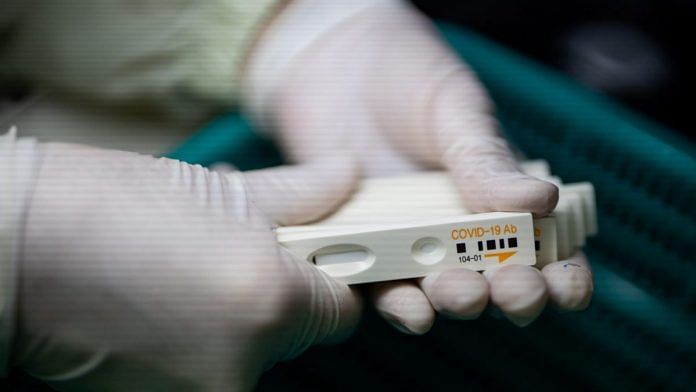Seoul: Most children develop very mild SARS-CoV-2 infections that risk escaping detection unless extensive testing is done to find cases, South Korean researchers said.
The Asian country used mass testing of suspected Covid-19 cases, patient isolation and contact tracing to control the pandemic virus. Still, about 70% of children at risk of infection had symptoms that didn’t get picked up, researchers said Friday in the journal JAMA Pediatrics. In fact, 93% of pediatric cases would have been missed if doctors had focused on testing symptomatic patients alone, they said.
The findings indicate that there’s “no other good alternative” to extensive testing for early detection of Covid-19 cases, Jong-Hyun Kim of the Catholic University of Korea, Eun Hwa Choi of the Seoul National University College of Medicine and colleagues reported. That may be difficult in the U.S. — where schools and colleges are reopening — after the Centers for Disease Control and Prevention shifted its guidance this week away from testing asymptomatic individuals.
“A surveillance strategy that tests only symptomatic children will fail to identify children who are silently shedding virus while moving about their community and schools,” Roberta DeBiasi and Meghan Delaney at Washington’s Children’s National Hospital, wrote in an accompanying editorial. In regions where face masks aren’t widely accepted or used by the general public, asymptomatic carriers may serve as an “important reservoir” that allows the virus to spread, they said.
Also read: Punjab Covid transmission rate drops to 1.13, MP records lowest tests per million
Asymptomatics ‘alarming’
Still, new 15-minute tests from Abbott Laboratories that cost $5 each may encourage more widespread monitoring of students and other populations. The U.S. is spending about $750 million to purchase 150 million of the diagnostics, almost all that the company will produce this year.
The researchers tested and tracked 91 children under 19 years of age who tested positive for SARS-CoV-2 infection and were hospitalized or isolated across 22 centers in South Korea in February and March. Among those with upper respiratory tract infections, the coronavirus was detected for an average of 18.7 days. Those with a lower respiratory tract infection were positive for an average of 19.9 days.
Even among asymptomatic children, virus was detectable for a mean of 14.1 days, which the researchers called “alarming.”
The scientists weren’t able to tell whether a positive test indicated the presence of infectious virus or non-contagious viral “debris.” The former would indicate “the transmission potential of SARS-CoV-2 in children and its effect on the community might be greater than expected,” they said.
Among the 91 children:
- 22% were asymptomatic
- 41% had a cough
- 30% had a fever over 38 degrees Celsius
- 29% had a sore throat
- 27% had a runny nose
- 12% had diarrhea
- 12% lost sense of taste
- 51% had “mild” disease
- 22% had “moderate” disease
- 2% had “severe” disease
- None required intensive care
A separate study from the U.K. involving 651 young people under the age of 19 confirmed that children have less severe Covid-19 than adults, and death is exceptionally rare, occurring only in children with serious underlying conditions. Black children were disproportionately severely affected, University of Liverpool researchers said in the study published Friday in the BMJ medical journal.-Bloomberg
Also read: Bengal Covid tests much lower than India’s average, even Bihar, Assam & Odisha testing more






